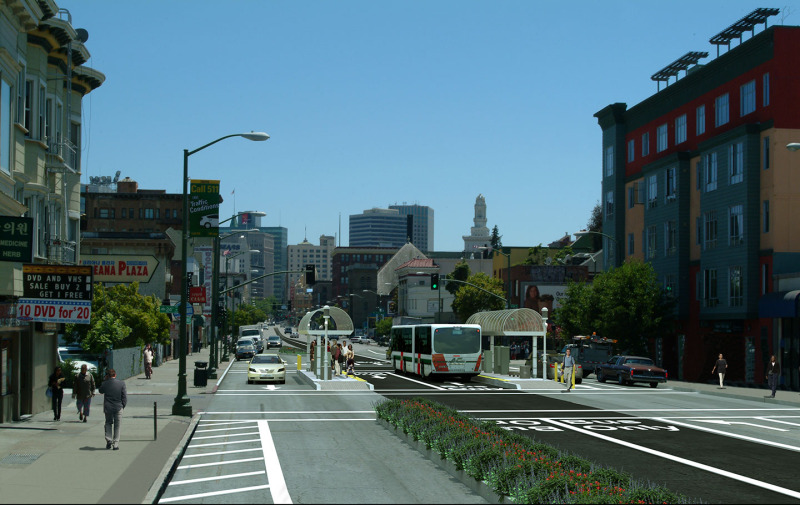As AC Transit begins construction on Bus Rapid Transit (BRT) on International Boulevard in Oakland, we wanted to take a moment to consider the impact of the new transit design on one population that relies heavily on the bus system: seniors, particularly low-income seniors, many of whom travel along this corridor.
One commonly voiced fear about the new BRT line is that better transit will raise real estate prices in an area of historically lower-income residents. Low-income seniors living in rapidly changing neighborhoods are in gentrification’s crosshairs. Safe access to reliable transit is one of the most important factors that allows them to age in place and stay in Oakland.
The BRT line will replace the 1 and 1R lines on International Boulevard, providing connections from San Leandro to downtown Oakland. Stops on the new line will be spaced one-third of a mile apart (about the distance to walk from 12th Street BART across Broadway and Frank Ogawa Plaza to Oakland City Hall).
BRT is projected to increase ridership along this corridor from 25,000 trips per day to 36,000. “I’m really, really happy about that,” said Chonita Chew, a travel trainer with United Seniors of Oakland and Alameda County (USOAC), which helps seniors 55 and older transition from driving to taking transit.. “I’m happy about the BRT. It’s going to make my job easier.”
“The BRT route is heavily traveled by seniors and people with disabilities,” said Joel Ramos, regional planning director at TransForm. Planners put together a list of about 100 senior destinations along the proposed route when they first started working on the BRT project eight years ago. Those destinations helped determine the locations of many of the BRT stops. Ramos said that seniors and senior advocates played an important role in shaping the services that will be offered by BRT in Oakland.

